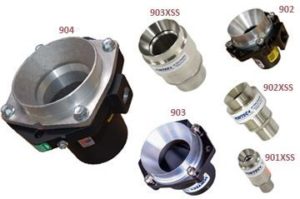Free shipping on all orders over $150! Use coupon code FREESHIP at check out
Round Transvector/ Air Amplifiers
C.C. Steven, your ANSWER to compressed air challenges.
Showing all 7 resultsSorted by popularity
-
Sale!
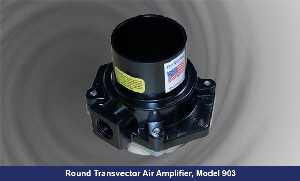
Air Amplifier (1.57″ throat) Model 903
Rated 4.00 out of 5$250.00Original price was: $250.00.$243.00Current price is: $243.00. Add to cart -

Air Amplifier Accessories
$10.00 Select options This product has multiple variants. The options may be chosen on the product page -
Sale!
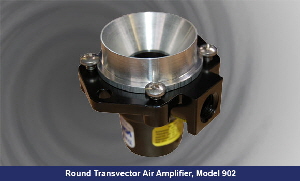
Air Amplifier (0.79″ throat) Model 902
$205.00Original price was: $205.00.$199.00Current price is: $199.00. Add to cart -
Sale!
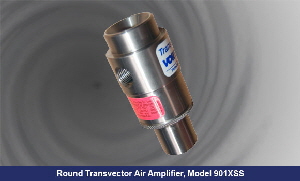
Transvector Airflow Amplifier (0.39″ throat) Model 901XSS
$380.00Original price was: $380.00.$369.00Current price is: $369.00. Add to cart -
Sale!
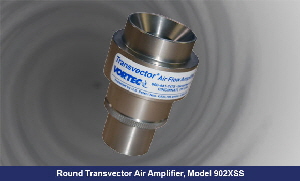
Air Amplifier (0.79″ throat) Model 902XSS
$440.00Original price was: $440.00.$427.00Current price is: $427.00. Add to cart -
Sale!
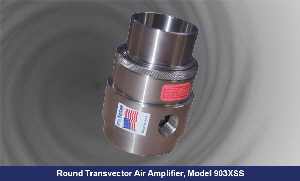
Air Amplifier (1.57″ throat) Model 903XSS
$565.00Original price was: $565.00.$548.00Current price is: $548.00. Add to cart -
Sale!
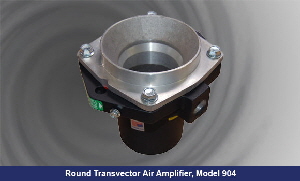
Air Amplifier (3.00″ throat) Model 904
$630.00Original price was: $630.00.$612.00Current price is: $612.00. Add to cart
Round Transvectors / Air Amplifiers
Round Transvector air amplifiers are ideal for conveying any material that can be moved in an airflow and for removing fumes and scrap. Since transvector air amplifiers move large volumes of air using only a small amount of compressed air, they are economical to operate.
PRODUCT OVERVIEW
Air Flow Amplifiers deliver a large airflow for conveying, drying, cooling or ventilation. These high flow, bladeless blowers have no moving parts so they are inherently safe. They amplify compressed air volumes by 12 – 20 fold in ducted applications and up to 60 fold in unducted applications. They are especially useful for removing metal chips and scrap, ventilating fumes or smoke, and conveying small parts, pellets, powders and dust.
As a vacuum or blow-off device, air amplifiers are more compact and less expensive than variable-speed blowers and fans, provide instant on/off performance, and operate at low noise levels to meet OSHA requirements. Air Flow Amplifiers are easily mounted and can be used in both ducted and unducted applications. They are available in several sizes, both aluminum and stainless steel and deliver flow rates from 32 to 2300 SCFM (900 to 65,000 SLPM).
Transvectors’ range of applications include:
-
- Conveying any material that can be moved in an airflow including grain, plastic pellets, sawdust, powder, capsules, metal chips, paper and cloth trim, lint, dust, small parts, stamping scrap and lead shot.
- Ventilating and exhausting welding, soldering and machine smoke, auto exhaust, plating tank fumes and other gases.
- Cooling molded parts, castings, etc.
Applications:
Round Transvectors are used in both ducted and unducted applications. In ducted applications, they are used at flow rates up to 2400 SCFM (67920 SLPM). Transvectors are excellent for ventilating, air conveying, drying and cooling.
Round Transvector Airflow Amplifiers (aluminum body)
are high flow “bladeless blowers” that do not require machine guards and are inexpensive, small, light weight and easy to install.


DESCRIPTION
Using only a small amount of compressed air as a power source, you can move large volumes of air with Transvector products. An airflow amplifier, a Transvector increases airflow using an energy transfer process that induces motion in the free, surrounding air. Amplification ratios up to 60 times greater than the compressed air consumption enables Transvectors to deliver an increased airflow while drastically reducing compressed air consumption and noise levels.
Capable of ducted flows to 2400 CFM, Transvectors may be used ducted or unducted. An air line pressure regulator controls a Transvector’s output by adjusting input.
Excellent for ventilating, air conveying, drying and cooling, Transvectors use no electricity, have no moving parts, and meet OSHA noise specifications.
Features:
* No moving parts, maintenance free
* Easily controlled output
* No electricity, explosion hazard, or RF interference
* Fraction of the cost of variable speed blowers or fans
* No guards or safety hazards
* Instant on / off
* Quiet — meets OSHA requirements
* Easily mounted, ducted, moved
* Performs air conveying at atmospheric pressure without air locks
* Better than coandas, venturis, and ejectors
IMPULSE PRINCIPLE AT WORK
The Transvector uses an impulse principle to accelerate a large mass of stationary air with a thin sheet of sonic velocity air. When compressed air enters the Transvector, it fills a chamber which has only one exit path: an annular orifice 0.002” wide. As the air passes through this orifice, it accelerates to 1000 FPS. A lip on the orifice deflects the compressed air down the throat of the Transvector, where it collides with surrounding air and accelerates great masses of free air toward the outlet. It is a simple energy transfer process, similar to a break in a pool game. A few high speed particles of air collide with still air particles, resulting in a greater number of particles moving at moderate speed.
The secret of the Transvector lies in its ability to maximize the speed of compressed air it releases. Energy released by the compressed air as it strikes the still air increases be the square of its velocity.
Applications:
* Conveying any material that can be moved in a rush of air: grain, plastic pellets, sawdust, powder, capsules, metal chips, paper and cloth trim, lint, dust, small parts, stamping scrap, lead shot, etc.
* Ventilation and exhaust of welding and machining smoke, auto exhaust, plating tank fumes, and other pollutants
* Purging tanks of explosive or poisonous fumes
* Weigh sorting of pharmaceuticals and other light items
* Surface cooling of workers, electronic controls
* Cooling molded parts, castings
* Drying printing inks
* Creating air curtains
PERFORMANCE OF TRANSVECTORS
Transvectors may be used either ducted or unducted. The basic amplification ratio is a measure of air amplification in a ducted installation.
| Model | Basic Amplification Ratio Ducted Applications |
Ducted Output* | Entrainment Ratio Unducted Applications |
| 902 | 12:1 | 100SCFM | 36:1 |
| 903 | 19:1 | 450SCFM | 57:1 |
| 904 | 20:1 | 1000SCFM | 60:1 |
| * at 100PSIG inlet pressure | |||
SPECIFICATIONS
| Model# | 901XSS | 902 | 902XSS |
| Air Amplification | 5 | 12 | 12 |
| Suction End Diameter (inches) | 1 | 1.75 | 1.5 |
| Ducted Output (scfm) | 45 | 204 | 204 |
| Material of Construction | Stainless Steel | Aluminum | Stainless Steel |
| Model# | 903 | 903XSS | 904 |
| Air Amplification | 19 | 19 | 20 |
| Suction End Diameter (inches) | 2.75 | 2.5 | 5 |
| Ducted Output (scfm) | 475 | 475 | 1420 |
| Material of Construction | Aluminum | Stainless Steel | Aluminum |
The entrainment ratio for unducted applications is three times greater because it takes into account the additional entrainment or air surrounding the output stream. The entrainment usually occurs a few feet within the Transvector’s outlet.
Because of the water and dirt contaminants in most factory air systems, we recommend a five Micron filter in the compressed air line to prevent clogging of the annular orifice.

